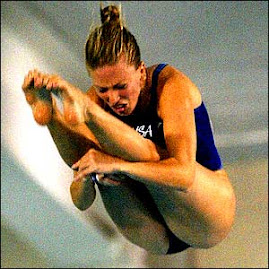
Thursday, April 16, 2009
Eating Disorders in Athletes

Wednesday, April 15, 2009
Substance Abuse In Athletes

Tuesday, April 14, 2009
Spectator Agression in Youth Sports
Spectator’s aggression is an issue that is often related to youth sports. Parents are the most likely to engage in aggressive behaviors because they get too involved in the game. These aggressive behaviors consist of yelling, swearing, shoving, and fighting. Parents mostly get aggressive towards other parents, spectators, umpires, coaches, other players and their own child. In researching more about spectator aggression I found this article that talks about two hockey dads that got in a fight during their son’s game and one father ended up being beaten to death.
'Hockey dad' gets 6 to 10 years for fatal beating
A jury of nine women and three men found Junta guilty of involuntary manslaughter January 11, rejecting the more serious charge of manslaughter, which carries a 20-year maximum prison term. Acting on the state prosecutors' recommendation, Judge Charles Grabau gave Junta double what the Massachusetts sentencing guidelines outline for such a sentence. Before the sentence was read, Costin's family painted an image of him as a devoted father. They countered reports in the media that Costin, a single father of four, had a violent past, noting that he had taken classes to confront his shyness. His sons, hoping to extend Junta's sentence, told the courtroom how their father's death has affected them. I saw Thomas Junta beating my dad into the ground. For the rest of that day and for the next day, my heart was in my throat," said Michael Costin Jr. "Please teach Thomas Junta a lesson: Let the world know that a person can't do what Thomas Junta did to my dad, to my family and to me ... we all want Thomas Junta to go to prison for as long as your honor can put him there."
On July 5, 2000, Junta -- a 6-foot-1, 270-pound truck driver -- fought twice with Costin, who was 6 feet tall and weighed 156 pounds. The second fight proved fatal for Costin. The two men had argued over what Junta described as rough play during hockey drills that both men's sons were participating in at the Burbank Ice Arena in Reading, Massachusetts. Junta's attorneys have described him as a "gentle giant" who was only trying to defend himself in his fight with Costin.
"This was a fight between two men that got out of hand," said Junta's attorney, Thomas Orlandi Jr., "He is, in no way, a threat to society."
Junta is married with two children. In an attempt to help his family, Orlandi asked the judge Friday to consider alternatives to incarceration for Junta, who Orlandi said does not have a past criminal record. Orlandi requested Junta be placed on "closely supervised probation" so he could perform his duties to his family as the sole breadwinner and also pay his debt to the state. The defense attorney noted that Junta is a "hardworking, honest" and "responsible" man who fully cooperated with police following the incident, and during the trial.
"All the families have suffered ... his children couldn't be here, they were so distraught," Orlandi said, adding that Junta's role in the fatal altercation did not represent who his client really is. Involuntary manslaughter is an unintentional killing as a result of a battery in which the defendant knew or should have known a human life was endangered.
It’s scary to think that adults can take something so little so far. You would never think that an argument like this can be taken so far that it leads to death. Many adults have been reported for all kinds of aggressive behavior during a youth sports game. If adults are standing on the sidelines acting like this then what does it teach their children? It’s terrible for any kid who has to experience a situation like this because most kids that participate in sports are there because there friends are doing it, its fun, or simply because they enjoy that particular sport. You would think that spectator aggression is something that mostly occurs at a high school or college level yet it begins at youth sporting games. Hopefully a tragedy like this raised awareness for adults that have acted out during a youth game before. It’s terrible that these kids had to experience such tragedy at a young age. Spectator aggression is defiantly something that should be monitored but its to bad that within my own research I found many articles relating to adults at youth sporting events.
The Healthy Way To Engage In Sport

Thursday, April 9, 2009
Speed Walking as an Olympic Sport

Monday, April 6, 2009
Overuse Foot Injuries Are Common In Runners

Tuesday, March 10, 2009
Wrestling



